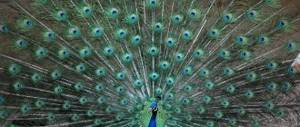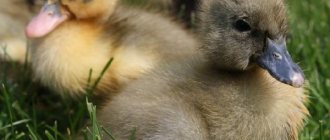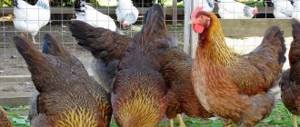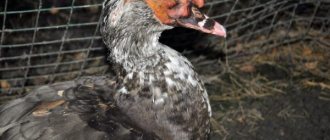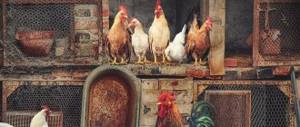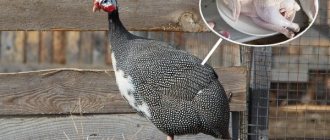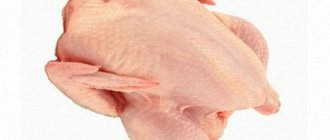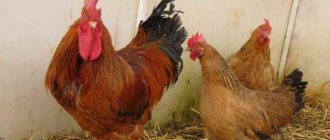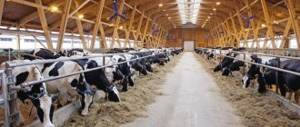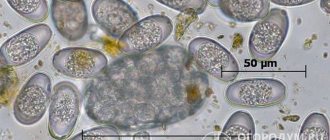Diet for every day
At home, it is difficult for this exotic bird to create conditions for its usual diet. Therefore, farmers have to look for a proper replacement that will not only be tasty for the peacock, but also nutritious. Seeds of various plants, fruits, berries and vegetables, and even food from the owner or other pets living on the site will come to the rescue.
Menu for peacocks for every day (daily requirement):
- Crushed corn – 60 g;
- Oatmeal – 40 g;
- Cereals or their waste – 100 g;
- Alfalfa flour – 50 g;
- Sunflower cake – 10 g;
- Vegetables and root vegetables – 50 g.
You also need to add finely ground salt, chalk or lime to the food if the bulk of the food consists of grain. You should also always add fine gravel or wood ash to the feeder.
In addition to grain, it is recommended to add fine gravel, table salt and wood ash to the bird feeder.
During the breeding season, the diet of peacocks is slightly increased, adding a little protein and nutrients to it.
- Herbal flour – 50 g;
- Boiled potato pieces – 100 g;
- Juicy food – 70 g;
- High protein food – 200 g;
- You can add bread or any ready-made porridge.
Porridge can be given to peacocks no more than once a day, but grain should be given both in the morning and in the evening. There must be grass growing in the aviary, at least a small amount, and there must be several trees so that the birds can get worms and various bugs for themselves. Several times a week, the birds can be treated to homemade low-fat minced meat - every peacock eats it with pleasure. Young spring grass - nettle, dandelion leaves - should be given every day, but before that it is better to cut it. During egg laying, birds add milk, eggs or cottage cheese to their food to improve intestinal function and produce viable babies.
Do they eat peacock meat?
Peacock meat is not just eaten, it is considered a real delicacy. Its nutritional qualities are similar to turkey, but due to the smaller amount of fat it is more dietary.
There are no original recipes for preparing this bird in our national cuisine, so most of them are borrowed from England and France. Although some chefs claim that it can be safely used instead of other game in traditional recipes in our cuisine, for example, instead of pheasant.
Feeding the chicks
We have sorted out the nutrition of adults, but not the food for babies. Many inexperienced farmers ask, what to feed newborn chicks? The first weeks of life are very important for the formation of healthy individuals, so at this moment nutrition is very important for the chicks.
A recently hatched peacock chick should eat boiled eggs, and a grown-up chick should eat low-fat minced meat.
It is allowed to pour a little curdled milk or add mixed feed into a separate feeder. After 1 month of life, the chicks can be switched to mixed food.
It is worth considering that babies’ bodies react negatively to wet or dirty foods, so you need to carefully monitor what the chick eats. For example, even grass needs to be thoroughly washed and dried. Since young birds are actively growing, it is necessary to select a menu for them that takes into account all the daily needs of their body for vitamins and nutrients.
Nutritional Features
Since peacocks are exotic and special birds, their feeding requires compliance with some nuances. It must be remembered that you should always give food to birds at the same time.
Food for adults and small chicks should always be fresh and dry, without signs of mold, spoilage or any foreign additives. Sprouted grain will be beneficial for birds, but it must be prepared correctly. First, the grain is sown; when it has sprouted, it is thoroughly washed and dried in a warm place - in the oven or in the sun. Mixed food can be stored in the refrigerator for up to three days, but should not be served cold, as stale and cold food can harm the bird's delicate intestines.
Peacock feeders
Good and complete feeding of peacocks can be very expensive for the farmer. Therefore, the choice of containers for food and drink must be approached very carefully in order to minimize the loss of expensive feed. After all, food spoils very quickly, becomes contaminated, is scattered by the birds themselves and becomes wet or damp.
To feed peacocks, you can make your own feeder from boards.
The peacock feeder itself can be made from dry wooden boards that are free of knots or damage. Their thickness can be about 5-10 mm, and the height must be calculated so that the birds reach the bottom, but cannot climb inside. The sharp corners of the boards must be rounded so that the birds do not get injured and carefully knocked together using nails.
You can also purchase a suitable feeder. An excellent option would be a trough-type container, where the end walls are slightly higher than the side walls. A special turntable is installed on the end wall, which spins and prevents birds from climbing inside. You can also use store-bought or home-made feeders on low stands.
Until the age of thirty days, small chicks are usually fed from small trays made of plywood, plastic or iron. Up to forty babies can eat from one such feeder, 70 cm wide, at the same time.
Peacocks usually divide into small groups, so several feeders should be placed in the enclosure to prevent fighting and sharing of food. The container should be comfortable and without obstacles so that each peacock can come up and eat. But a 20 cm feeder is enough for one adult bird, and 10 cm is enough for a small one, otherwise the food in a large container will quickly deteriorate and the birds may starve or even get poisoned.
What is prepared from it in different countries of the world?
Previously, only aristocrats could afford such a product; it was served exclusively on special occasions. So, in France, at royal feasts, one of the central dishes was a baked or fried peacock, decorated with feathers, gilding and with precious stones instead of eyes.
It was also used to prepare soups, pates, pies and served with vegetables and fruits.
England has long been famous for its traditional Christmas dish - a whole roasted peacock. Today, some restaurants offer their guests this bird with various sauces and vegetable side dishes.
Some of the popular dishes are:
- fried fillet pieces in egg batter with cranberry or lingonberry jam;
- a whole carcass stuffed with liver and chestnuts, on a bed of vegetable puree;
- soup of legs and wings with celery, zucchini, carrots, spices and herbs;
- spicy marinated wings cooked over coals or a frying pan.
To soften the future dish, before cooking it can be marinated in vinegar, red wine or sour milk.
In this case, take two parts of water for one part of table vinegar and add different spices to taste - allspice, bay leaf, onion, garlic and others. The marinade is brought to a boil, cooled and poured over the bird. Read also: Do they eat peacocks?
What do kingbirds eat?
The peacock is a very beautiful ornamental bird, which for many of us today represents a kind of exoticism and is associated with wealth. Just a few decades ago, these birds could only be seen in the courtyards of the nobility, kings, nobles, in nature reserves and game reserves. The bird itself comes from India and in this country is sacred, a symbol of the Sun and the personification of the god Krishna. The Indian species is the most common in the world and is what can be seen in many private households in our country.
If you are one of the lovers of these beauties and dream of having at least a couple of these birds decorate your yard, then you should find out about their diet. Although the peacock is the rooster's closest relative, it requires slightly different care. Although not royal.
At home
In principle, it is not difficult to feed the bird of paradise at home. As a rule, all the feed that every poultry farmer has is suitable for them. They are given various grains, root vegetables, vegetables, and cakes. For example, the average daily dose of food for an adult may consist of:
- 50 grams of crushed corn;
- 40 grams of oats or barley;
- 50 grams of alfalfa flour;
- 90-100 grams of grain waste;
- 10 grams of sunflower cake;
- 50 grams of root vegetables and vegetables.
If you give the bird pure grain, then experts advise mixing it with chalk or ground salt. Thus, the need for mineral supplements disappears by itself. Like many other poultry, peacocks need to be provided with sufficient amounts of gravel. It is good to add fine coal or wood ash to the feeder.
If you have regular table scraps such as bread and cereal, these can also be fed to the bird. But not more than once a day. Peacocks, like domestic chickens, are great at finding their food from the ground. During walks, they eat various insects, larvae, earthworms and grass. If peacocks live in a closed enclosure, they need to regularly collect fresh greens on their own, such as nettles, dandelions or yarrow. It should also be remembered that the diet of peacocks differs at different periods of their life.
Peacock meat in world cooking
Peacock meat is dietary and has a pleasant aroma and taste. In Europe, only aristocrats could afford it, and in Ancient Rome, birds were served at the table on special occasions. In France, during the reign of kings, it was customary to have several courses at feasts, and at the end unusual treats and edible sculptures were placed on the table. Very often one of these treats was baked or fried peacock. The peacock's head was decorated with a crown, its body was covered with feathers, and its beak was gilded. Instead of eyes, precious stones were inserted. Peacock meat was especially popular in Lyon, where soups and pates were prepared from it, used in pies, and stewed with vegetables and fruits. For a long time in England there was a tradition of roasting a whole peacock for Christmas.
In the modern world, peacock meat is undeservedly forgotten.
In England, in some restaurants, peacock meat is cooked with various sauces and served with vegetable side dishes. Visitors eat it more out of curiosity, but many people like the unusual taste of game.
Read also: Peacock pigeons: breeding and caring for the breed
Peacock feeding diet
Feeding a peahen is quite a responsible task. The breeder should create a diet that matches the bird’s diet in natural conditions. As in nature, in households they must receive sufficient amounts of vitamins. It is also important to remember that these birds are extremely whimsical about changing the menu.
In some cases, if there is a sudden change, they will refuse food altogether. This should be remembered especially in cases where the usual diet changes due to a certain period of time. For example, during the period of oviposition or reproduction. In the spring, when peacocks begin the period of preparation for laying eggs, feeding should be slightly increased and varied. For example, at this time you can give in addition to the main diet:
- 50 grams of herbal flour;
- 70 grams of succulent feed;
- 200 grams of dry protein supplements;
- 100 grams of boiled potatoes.
During the breeding season, more protein foods should be added to the peacock menu. This could be cottage cheese, other dairy products and table scraps. It is also important to increase your consumption of greens. Do not forget that birds of paradise are especially sensitive to dirty and spoiled food; do not allow them to eat low-quality grain or other spoiled foods. Small chicks are especially vulnerable to this. In the first days of life, they, like chickens, are fed boiled eggs.
It's all about the eggs. What dishes are dangerous to order in restaurants?
On August 20, after visiting one of the capital's restaurants, 22 Italian tourists turned to doctors with signs of severe poisoning. Experts are still finding out the details of what happened, figuring out where, what and how the guests from Italy, who, by the way, have already left the capital, could have been poisoned.
“AiF-Kitchen” understands what it is better not to order in restaurants so as not to get poisoned.
No matter how high-quality the food in a restaurant is, no matter how seriously the chef and owner of the establishment take the product, the human factor can interfere. The cook will make a mistake or the supplier will bring bad products. Washing and control are not working properly. There can be a million coincidences. Therefore, when looking through the menu, it is worth knowing which dishes may be potentially dangerous and avoiding them.
First of all, you need to be especially careful with dishes containing raw eggs, meat and fish.
And if with meat and fish it is usually clear that they are present in the dish, then we may not even be aware of the presence of a raw egg in the plate. Here are some foods that may pose a risk.
Carbonara . For the most popular pasta, the sauce is made from yolk and Parmesan. Moreover, the yolk is beaten into the paste at the very end. The dish is then stirred and the yolk thickens, being heated by the pasta. Is it dangerous. In order to kill the bacteria that cause salmonellosis, you need to cook the dish at high temperature for several minutes.
Tiramisu . Tiramisu cream contains raw eggs. They do not heat up, but only harden in the refrigerator for several hours. This doesn't make them safe.
Poached eggs and other dishes in which the egg yolk remains liquid: fried eggs, for example. Poached eggs are boiled for 2-3 minutes in boiling water, and this is insufficient heat treatment for eggs. For an egg to be safe, it should be cooked for 10-15 minutes.
Hollandaise sauce . This sauce is made from raw yolks and butter. True, the mixture heats up for a minute, but this may not be enough to kill the bacteria.
Caesar and Olivier salads . Homemade mayonnaise and classic Caesar salad dressing include raw eggs. True, not all restaurants prepare sauces by hand; they often prefer to buy ready-made ones in the store, but they have certainly been tested.
Mikhail Lebedev, medical expert at the Center for Molecular Diagnostics (CMD) of the Central Research Institute of Epidemiology of Rospotrebnadzor : “Eggs are one of the possible causes of the disease. The greatest danger is from goose and duck eggs. Chicken and quail eggs are safer. Moreover, it is believed that quail is safer than chicken. But here you need to understand that quail eggs simply eat less, so there may not be as many cases of infection.”
River fish are especially dangerous, but sea fish are not far behind. Larvae of parasites are often found in fish. River fish can infect you with opisthorchiasis, which severely affects the bile ducts, and sea fish can infect you with nematodes of the genus Anisakidae, causing pain, vomiting and other symptoms. So all types of rolls and sushi are prohibited. The exception is if you personally know the supplier very well and are sure that the raw fish has been subjected to shock freezing: this kills both bacteria and parasites.
But it’s better to eat fried or boiled fish. And refrain from sushi, rolls, all kinds of tartars and ceviche. The latter, although they have become very fashionable, are still better to avoid. “Treatment with one weak solution of vinegar does not lead to the death of helminths,” says Lebedev.
Peacock meat
Today in our country peacock meat is a great delicacy. In terms of nutritional qualities, the meat of this bird is close to turkey, but it has less fat. In Russian cuisine there are no original recipes for preparing this type of game and most of the methods are borrowed from France and England.
However, some chefs use traditional Russian recipes for cooking pheasant, replacing pheasant meat with peacock meat.
Peacock fillet with berry sauce
To prepare poultry fillet with lingonberry or cranberry jam you will need: 500 grams of poultry fillet, cut into pieces and well beaten, a mixture of eggs, salt and pepper. Fillet pieces are fried in vegetable oil, having first rolled them well in the egg mixture until an even golden crust forms. The finished meat is placed on a plate along with slices of fried potatoes. The jam is served in a separate bowl or poured over poultry fillets.
Read also: Description of peacock species: Peahens (females) and interesting facts from their life
Peacock carcass with edible chestnuts
Another popular recipe involves cooking poultry with chestnuts. The whole carcass is rubbed with salt, lemon juice and stuffed with small pieces of lard, liver and chestnuts. Bake the carcass in the oven for two hours. The finished bird is served on a bed of vegetables or mashed potatoes.
Poultry broth
Bird wings and legs can be used to prepare delicious and tender broths and soups. To do this, they are boiled with the skin in water with the addition of spices, salt, and vegetables - potatoes, celery, zucchini and carrots. The finished broth can be served with herbs and garlic.
Fried peacock wings
Bird wing can also be prepared according to a simple and tasty recipe: the wings are marinated in a mixture of hot chili peppers, sour cream, grated carrots, tomato paste, cilantro, oregano, onions, ground black and white pepper. To taste, you can add various herbs, lemon juice or finely chopped celery. These wings can be fried in a frying pan or used for cooking over charcoal. They turn out juicy, aromatic, slightly spicy, with an unforgettable aftertaste.
Eggs in proper nutrition
The principles of a healthy lifestyle and, in particular, proper nutrition are becoming increasingly popular among the population. This allows you to have an attractive appearance, improve your health, and improve your overall psychological well-being. But sometimes, adhering to the norms of rational nutrition, we have to refuse or greatly limit some of our usual food products. Could there be eggs among them? Let's try to answer this question?
Are eggs necessary in food?
Eggs have appeared in the human diet since time immemorial and are included in all (or almost all) dishes of the peoples of the world. In fact, it is a very valuable food product. What makes it so is that the egg must contain all the substances necessary for the formation of a new multicellular organism. If you look at the percentage of nutrients in a chicken egg, we get:
- proteins – 12.57%;
- fats – 12.02%;
- carbohydrates – 0.67%;
- minerals – 1.07%;
- water – 7.67%.
Moreover, all components are relatively easily digestible (depending on the method and degree of cooking).
The vitamin composition of eggs has the following indicators:
- vitamin A - 0.45 mg;
- B6 – 0.14;
- B12 – 2.0;
- E – 1.2;
- D – 2.0;
- Folacin – 17.0;
- Riboflavin – 0.44;
- Niacin – 0.39;
- Thiamine – 0.07;
- Pantothenic acid – 1.2;
- Choline – 320;
- Biotin – 20.7 mcg.
In addition, they contain minerals such as phosphorus, calcium, magnesium, chlorine, potassium, sulfur, iron, sodium. Thanks to this composition, the egg is considered a dietary and complete food product.
How many eggs can you eat on a diet?
Before answering this question, you need to remember that an egg consists of two components - the yolk and the white. These are two very different substances. The white contains mainly proteins, and the yolk contains lipids. It is this feature that underlies the principles of using eggs in dietary nutrition. Since weight loss is only possible if the amount of energy consumed is reduced compared to energy consumed, fats are the first to be corrected. In an egg they are contained in the yolk, so the number of yolks should be limited to one. But proteins can be consumed in any quantity within the ratio of proteins, fats and carbohydrates. Protein omelettes are a frequent guest on the table of people who adhere to proper nutrition. They are well absorbed and do not carry a large energy load. Egg white proteins are ideal for low-calorie dieters - they contain four times fewer calories than beef and six times fewer calories than pork. You should not completely give up the yolk, since it contains the so-called “good” cholesterol, which is absorbed by the body and does not leave fatty plaques in the bloodstream. In addition, almost all vitamins are also concentrated in the yolk. Therefore, eggs must be present in the diet of people who control their weight, but yolks should be limited to one. Recently, more and more adherents of a healthy diet are talking about quail eggs as healthier.
Are quail eggs healthier than chicken eggs?
In order not to write an ode to quail eggs, it is enough to simply compare their composition with chicken eggs. They contain 2-3 times more vitamins A, group B and rutin (vitamin P). In addition, they also have an advantage in iron, magnesium and potassium content. But unlike chicken eggs obtained from poultry farms with a high level of quality control and sanitary standards, quail eggs are sold by individual farmers from private yards, often without the appropriate documents. Therefore, the risk of contracting salmonellosis when consuming a homemade product increases several times. If the choice is made specifically on a quail product, then it is worth asking the seller for documents confirming the bacteriological safety of the product.
What can you cook from eggs?
It is known that a varied diet allows you not only to nourish the body, but also to bring pleasure from eating. Eating only boiled eggs every day will quickly get boring, so it’s worth diversifying your menu with simple but unusual dishes made from them:
- Scramble is an American version of scrambled eggs. The secret and difference is that the loose eggs mix during the frying process all the time and form a kind of large flakes. You can add various components to them: vegetables, mushrooms, boiled meat;
- eggs in onions, peppers or tomatoes - a regular fried egg, poured into rings of anything that can be combined with an egg and act as a rim;
- protein omelet - beat three whites and one yolk with water or milk and pour into a hot frying pan or cook in a water bath. The main thing is not to forget to add a little salt.
Thanks to these simple recipes, you can include eggs in your diet every day in a new, unusual taste.
{SOURCE}
